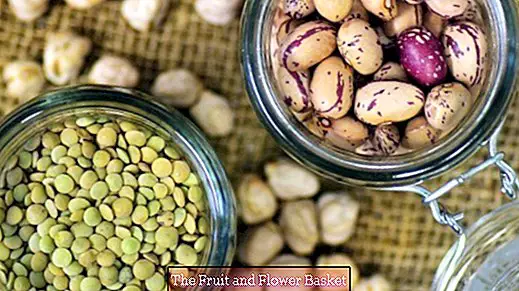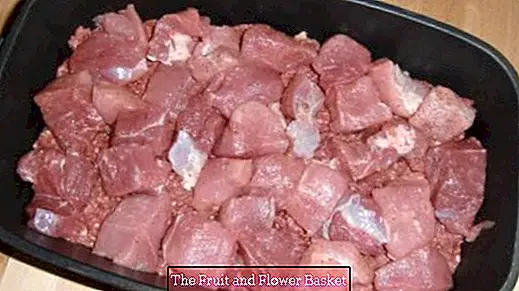Vegetable proteins: These foods provide a lot of protein
Meat and fish contain a lot of protein, which is well known. But which plants actually supply many proteins? Vegetable protein sources are not only interesting for vegans as they contribute to a varied and balanced diet.
Proteins consist of vital amino acids and are especially for the muscle building essential. As in many areas of life: in moderation, instead of enjoying in masses. The German Society for Nutrition (DGE) recommends, for example 0.8 g of protein per kilogram of body weight a day to take. Factors such as age and physical activity also play a role. The upper limit, however, is 2 grams of protein per kilogram of body weight that you should eat a day. If you take between 45 and 75 g of proteins as a normal-weight adult a day, you move in a healthy area.
Vegetable protein sources
legumes
Legumes (eg lentils, chickpeas, beans and peas) not only contain many proteins, they also provide important vitamins and support a healthy intestinal flora. Although they are saturated, most legumes are quite low-calorie, Peas and white, red and green beans even contain less than 100 calories per 100 g. Legumes are great as a side dish, in lettuce, in stews and soups or in wrap. Chickpeas are also processed into delicious hummus and falafel balls.
Nuts, seeds and seeds
Nuts, kernels and seeds (such as hazelnuts, walnuts, macadamia nuts, sunflower seeds, almonds, cashews, pumpkin seeds, chia seeds, pine nuts) are high in protein and energy, have many vitamins and unsaturated fatty acids, However, they also have a lot of calories due to the fat, which is why you should not eat more than a handful a day. They are delicious in cereal, yoghurt, but also in salads, soups or baked in bread. They make great in muesli bars as well as a topping on casseroles or desserts. Incidentally, peanut is one of the legumes.
Whole grain cereals and pseudo cereals
Whole grain cereals (eg wholemeal bread, oatmeal, crispbread, wholegrain pasta) and pseudo cereals have high levels of carbohydrates as well as some protein. Under pseudo cereals z. Buckwheat and quinoa, which are used similar to cereals. The special on whole grain cereals is that it is not refined, so after harvesting it Shell and the seedling can not be removedwhich preserves essential vitamins, oils, ballast and minerals. The wholemeal and pseudo cereal products should be enjoyed in moderation, as they contain not a few calories. They can be partially eaten as a separate dish, are suitable as a side dish, in salads, soups or can be processed into patties. Oatmeal is the basis for cereal and oatmeal (also called porridge).
The front runners
The following table shows the leaders among vegetable protein sources. It is important to know that the proteins are given per 100 g in the unprocessed state (uncooked or not inserted in water).
| foods | Proteins per 100 g |
| Süßlupinensamen | 40 g |
| Red Lentils / Red Lentil Noodles | 26 g |
| peanuts | 25 g |
| Kidney beans | 24 g |
| Yellow Lentils / Yellow Lentil Noodles | 23 g |
| almonds | 21 g |
| Chia seeds | 20 g |
| Chickpeas / chickpea noodles | 19 g |
Attention: Lupine seeds are highly toxic - only the seeds of the bred sweet lupine are edible and therefore a great source of protein.
Noodles from legumes
Another source of protein and at the same time a healthy alternative to wheat flour noodles Noodles from legumes, Lentils made from lentils, chickpeas, beans and peas are rich in vitamins, fiber and have one by the way shortened cooking time (5-7 minutes). They consist of 100% of the flour of the respective legume and thus contain no additives. Personally, I have tried lentil noodles so far and think that pesto or tomato sauce is a great match, as the pasta itself has a strong taste in itself. One drawback is that legume noodles are more expensive than traditional noodles. Under no circumstances do they replace "normal" ones for me? Pasta, but a delicious new way to expand the flavor horizon.
In keeping with this tip, here's a delicious and easy recipe for salad wraps with kidney beans and chickpeas that contain both herbal and animal proteins.





